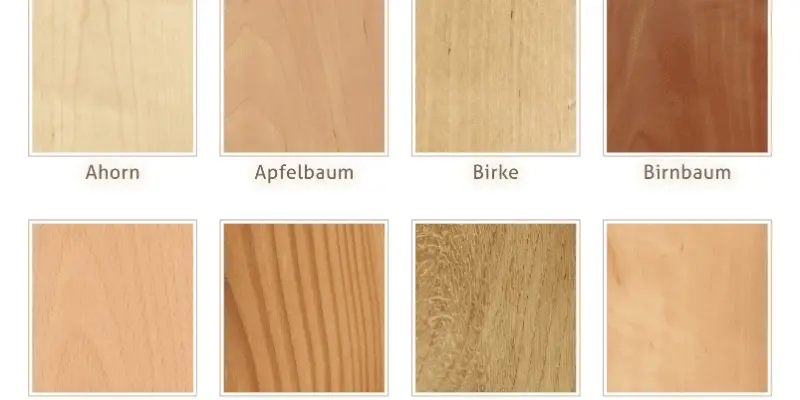When it comes to beech vs birch, beech is a hardwood, known for its strength and durability, while birch is a hardwood with a fine, uniform texture and good workability. These two woods have distinct characteristics that make them suitable for different applications.
Beech is often used for furniture, flooring, and woodworking projects, while birch is commonly used for plywood, veneer, and cabinetry. Understanding the differences between beech and birch can help in selecting the right wood for specific projects. Beech and birch are both popular choices in woodworking and construction due to their various attributes.
It’s essential to understand the unique properties of each wood to make informed decisions. We will explore the characteristics, uses, and benefits of beech and birch, to help you make the best choice for your projects. Whether you are a professional woodworker, a hobbyist, or simply exploring options for your home improvements, knowing the differences between beech and birch can guide you toward the right selection for your specific needs.
Understanding The Characteristics
When choosing between beech and birch wood for your furniture or flooring projects, it’s crucial to understand the unique characteristics that set them apart. From grain patterns to color variations and hardness, each wood type possesses distinct qualities that influence its suitability for different applications.
Grain Patterns
The grain patterns of beech and birch wood significantly differ, impacting the aesthetics of the finished product. Beech exhibits a straight, uniform grain that adds a classic and elegant appeal to furniture pieces. In contrast, birch features a tighter, more intricate grain pattern that lends a sense of warmth and depth to wooden surfaces.
Color Variations
The natural colors of beech and birch wood vary, offering designers and homeowners diverse options for their projects. Beech is known for its light, pale hues with a reddish undertone, while birch showcases a creamy, light yellowish color that can be stained to achieve a wide range of finishes.
Hardness And Durability
Beech is prized for its exceptional hardness and durability, making it an ideal choice for high-traffic areas and heavy-duty furniture. On the other hand, birch offers good strength and stability, suitable for furniture and items that require moderate wear and tear resistance.
Applications In Furniture And Interior Design
When choosing between beech and birch for furniture and interior design, it’s essential to consider their unique characteristics and suitability for different applications. Let’s explore how these two hardwoods are used in various furniture styles, current design trends, and sustainability considerations.
Suitable Furniture Styles
Beech and birch woods are both versatile options that can be used in a wide range of furniture styles, making them popular choices for designers and carpenters. Beech wood is known for its durability and strength, making it a great choice for heavy-use furniture, such as chairs, tables, cabinets, and work desks. On the other hand, birch wood’s fine and uniform grain lends itself well to intricate detailing, making it suitable for elegant and ornate furniture pieces, including cabinets, dressers, and shelves.
Design Trends
In the realm of interior design, both beech and birch are enjoying a resurgence in popularity due to their natural beauty and timeless appeal. While beech furniture exudes a warm and inviting ambiance, birch furniture is favored for its light and airy aesthetic, complementing modern and minimalist design themes. The clean lines and natural hues of both woods align with the current trend towards organic and sustainable materials in interior design.
Sustainability Considerations
From a sustainability standpoint, both beech and birch are prized for their renewability and fast-growing nature. Beech forests are managed carefully to ensure responsible harvesting practices, while birch trees have a rapid growth rate, allowing for sustainable sourcing. These factors make them environmentally friendly choices for furniture production, contributing to the promotion of eco-conscious design principles in interior spaces.
Maintenance And Longevity
When considering the differences between beech and birch woods, understanding their maintenance and longevity is crucial to making an informed decision. Both woods have unique characteristics that impact their care requirements, environmental impact, and lifespan.
Care Tips
Proper care is essential to ensure the longevity of beech and birch woods.
- Regular Cleaning: Both woods benefit from regular dusting or vacuuming with a soft brush attachment to prevent the buildup of dirt and dust particles.
- Protective Coating: Applying a protective coating, such as varnish or wax, can help shield the wood from moisture and wear. It’s recommended to reapply the coating as needed to maintain the wood’s luster and durability.
- Avoid Harsh Chemicals: Refrain from using harsh chemical cleaners that can damage the natural beauty of the wood. Instead, opt for mild soap and water solutions for cleaning.
Environmental Impact
Considering the environmental impact is crucial when comparing beech and birch woods.
- Sustainability: Birch trees can be sustainably sourced, as they grow relatively quickly and are abundant in many regions. Beech wood, on the other hand, may come from managed forests to ensure its sustainability.
- Carbon Footprint: Birch wood typically has a lower carbon footprint due to its faster growth rate and widespread availability, making it a more environmentally friendly choice.
Lifespan Comparison
Assessing the lifespan of beech and birch woods helps determine their long-term durability.
| Beech | Birch | |
|---|---|---|
| Durability | High | Moderate to high |
| Prone to Damage | Resistant to wear and tear | May be susceptible to dents and scratches |
| Lifespan | Long-lasting with proper care | Long-lasting if maintained well |
Cost-effectiveness And Availability
Beech and birch are both popular choices for furniture, flooring, and woodworking projects, each with its unique qualities. When it comes to choosing between the two types of wood, it’s essential to consider factors such as cost-effectiveness and availability. Let’s delve into the details to understand which wood type is more economical and readily accessible.
Pricing Factors
One of the key aspects to consider when comparing beech and birch is their pricing factors. Birch is generally more expensive compared to beech due to its higher demand and limited availability. Birch’s attractive grain and consistent texture make it a sought-after choice for furniture and cabinets, contributing to its premium pricing. On the other hand, beech tends to be more budget-friendly, making it an excellent option for cost-conscious projects without compromising on quality.
Market Availability
When it comes to market availability, beech and birch demonstrate distinct patterns. Beech is relatively more abundant in the market, making it easier to source and more widely available. This accessibility can lead to a more cost-effective procurement process, allowing for greater availability in woodworking and construction projects. In contrast, birch may require more effort to locate and may have limited availability in certain regions, impacting its cost and accessibility.
Economic Considerations
From an economic standpoint, considering the cost-effectiveness and availability of beech and birch is crucial for decision-making. Beech stands out as a cost-effective and readily available option, making it suitable for a wide range of applications. Birch, while offering premium qualities, may involve higher costs and potential challenges in sourcing, affecting its economic feasibility for certain projects.

Making The Choice: Factors To Consider
Choosing the right wood for your project involves considering various factors such as durability, appearance, and cost. When deciding between beech and birch, it’s vital to assess their specific attributes to meet your requirements. Understanding the unique qualities of each wood type will help you make an informed decision based on your needs.
Aesthetic Preferences
When considering the aesthetic appeal of beech vs. birch wood, there are distinct visual differences to take into account. Beech wood is known for its pale, pinkish-brown hue with subtle grain patterns, offering a warm and inviting appearance. On the other hand, birch wood boasts a lighter, yellowish color with a fine and even texture, providing a more uniform and contemporary look.
Practical Usage
When it comes to practical usage, both beech and birch wood have their unique strengths. Beech wood is highly regarded for its durability and hardness, making it an excellent choice for furniture and flooring that will see heavy use. Meanwhile, birch wood tends to be more pliable, making it a popular choice for crafting intricate furniture pieces and cabinetry.
Environmental Impact And Sustainability
Considering the environmental impact and sustainability, it’s important to note that both beech and birch wood are favored for their renewable qualities. However, birch wood is often preferred for its faster growth rate and regenerative properties, making it a more sustainable choice for those prioritizing eco-friendly materials.
Frequently Asked Questions For Beech Vs Birch
What Are The Main Differences Between Beech And Birch Wood?
Beech wood is known for its durability and hardness, making it ideal for furniture and flooring. Birch, on the other hand, is lighter in color and has a distinctive grain pattern, perfect for decorative purposes. Understanding these differences can help you choose the right wood for your project.
Is Beech Or Birch Wood Better For Furniture?
Beech wood is considered better for furniture due to its high density and durability. It can withstand wear and tear, making it suitable for items such as chairs and tables. Birch wood, while also strong, is often used for decorative purposes or smaller items due to its lighter weight.
Can Beech And Birch Wood Be Used Interchangeably In Woodworking Projects?
While both beech and birch wood share certain characteristics, they are not entirely interchangeable in woodworking projects. Beech is preferred for heavy-duty items like furniture and flooring, while birch is often used for decorative trim and lighter-weight projects. Understanding their individual properties is crucial for project success.
Conclusion
Both beech and birch woods offer unique characteristics for various uses. Understanding their differences and strengths can help in making informed decisions for woodworking projects. Whether it’s beech for its durability or birch for its affordability, both choices can be valuable additions to any woodworking arsenal.


